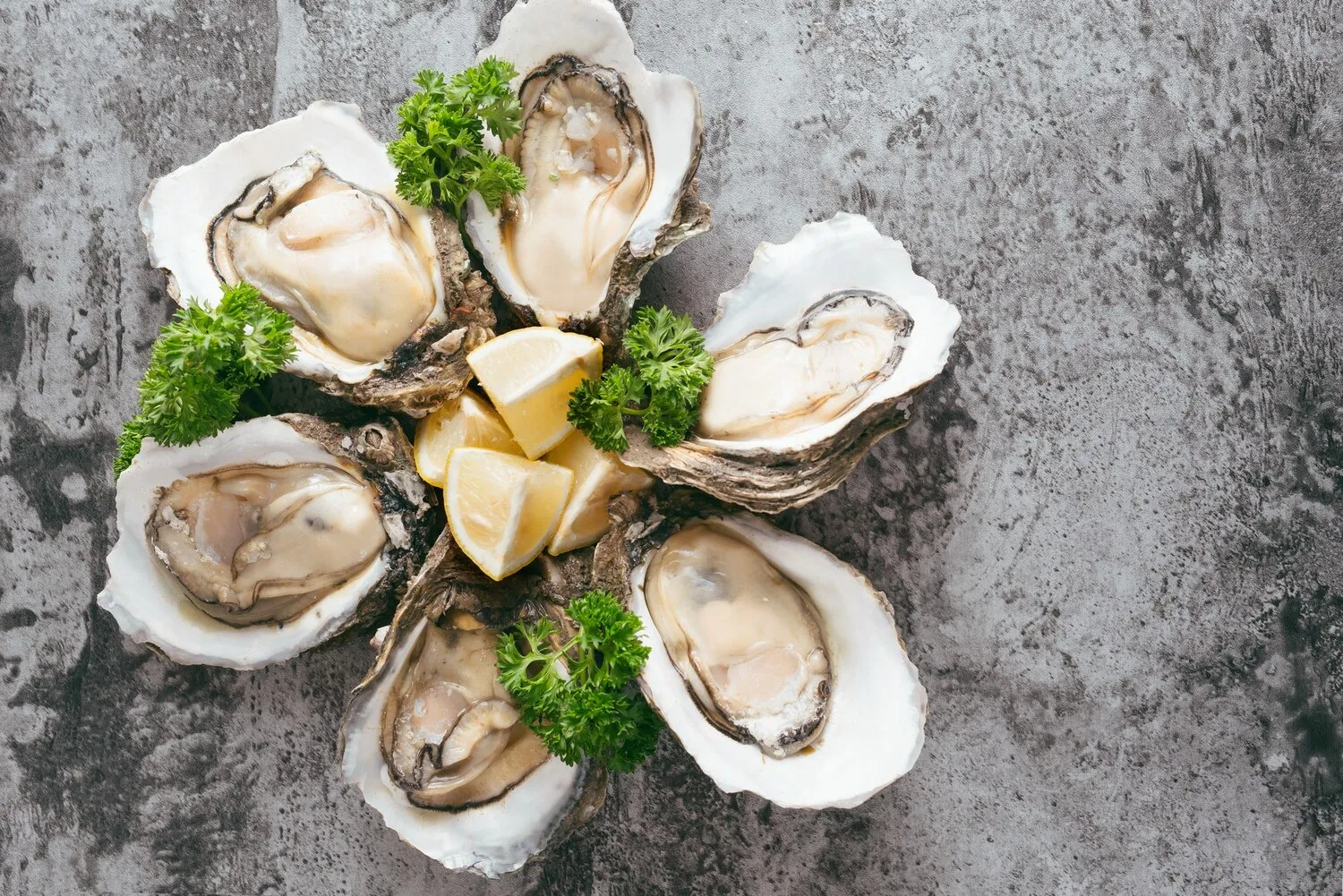
Oysters
Fresh oysters are frequently offered, reflecting the restaurant's commitment to quality ingredients. The preparation might vary.
Nutrition Facts
* The % Daily Value (DV) tells you how much a nutrient in a serving of food contributes to a daily diet. 2,000 calories a day is used for general nutrition advice.
Oysters have been a food source for humans since prehistoric times, with evidence of oyster consumption found in archaeological sites around the world. The Romans cultivated oysters extensively, and their popularity spread throughout Europe. In the Americas, Native Americans harvested oysters for centuries before European colonization.
Oysters hold significant cultural importance in many coastal communities worldwide, often associated with luxury, celebration, and the bounty of the sea.
Aphrodisiac Qualities
Oysters have long been considered an aphrodisiac, a belief possibly stemming from their high zinc content, which is important for reproductive health. This association has contributed to their romantic appeal and popularity as a celebratory food.
Environmental Importance
Oysters are filter feeders and play a crucial role in maintaining the health of coastal ecosystems. They filter pollutants from the water, improve water quality, and provide habitat for other marine life. Oyster reef restoration projects are becoming increasingly important for environmental conservation.
Regional Variations
Oyster culture varies significantly across different regions. Specific oyster types are prized in different areas, and local traditions dictate how they are harvested, prepared, and consumed. For instance, the Pacific Northwest is known for its Kumamoto oysters, while the East Coast of the United States is famous for its Blue Point oysters.
The flavor of oysters is primarily determined by the merroir, the unique combination of environmental factors like salinity, temperature, and nutrients present in the water where they grow.
Fresh oysters offer a briny, oceanic flavor profile, often described as tasting of the sea. The texture can range from firm and meaty to soft and creamy, depending on the species and growing conditions. Different oyster varieties exhibit subtle nuances, such as mineral, buttery, or even slightly sweet notes. Common accompaniments like lemon juice, mignonette sauce (vinegar with shallots and pepper), or hot sauce enhance the natural flavors without overpowering them.
Freshness is Key
Always choose oysters that are tightly closed or snap shut when tapped. They should have a fresh, clean, sea-like aroma and feel heavy for their size. Avoid any oysters that smell off or have cracked shells.
Opening Oysters Safely
Use an oyster knife and heavy glove or towel to protect your hand. Insert the knife into the hinge of the oyster and twist to pop it open. Run the knife along the top shell to detach the oyster and remove any shell fragments. Be careful to avoid cutting yourself.
Serving and Enjoying
Serve oysters immediately after opening them on a bed of ice to keep them cold. A squeeze of lemon, a dash of mignonette, or a few drops of hot sauce can enhance their flavor. Slurp the oyster directly from the shell, savoring the briny liquor and the texture of the meat.
Explore additional Seafood dishes and restaurants
Explore SeafoodDiscover top dining spots and culinary experiences in Zürich.
Explore ZürichLearn more about the food culture, restaurant scene, and culinary heritage of Switzerland.
Explore Switzerland